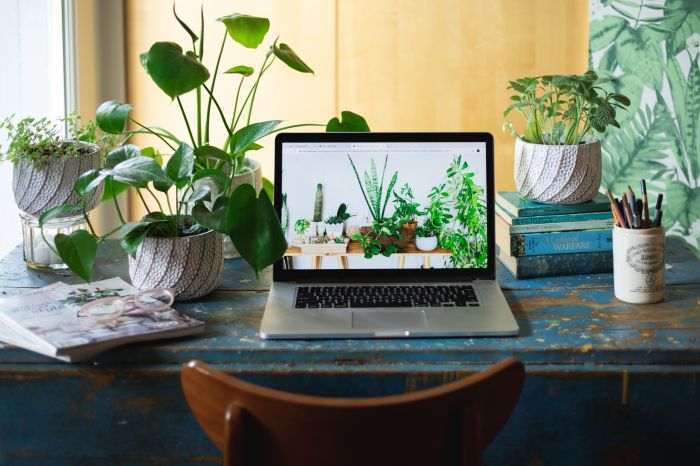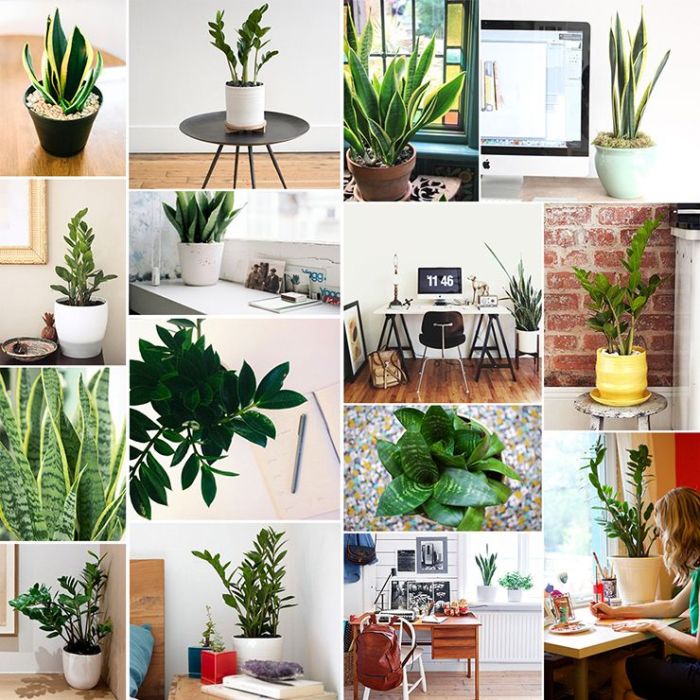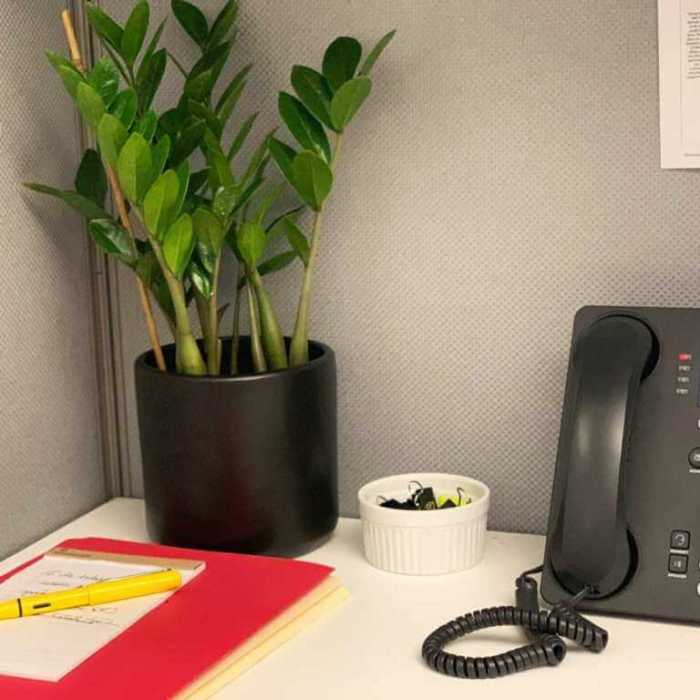In the realm of office environments, where natural light may be scarce, the introduction of plants can transform these spaces into vibrant and inviting havens. Best plants for office with no natural light not only add aesthetic appeal but also offer a plethora of benefits, including improved air quality, reduced stress levels, and enhanced productivity.
This comprehensive guide delves into the world of office plants, providing expert insights on selecting the ideal species for low-light conditions, understanding their light requirements, and implementing practical care and maintenance routines. Discover how to create a thriving indoor ecosystem that fosters well-being and productivity in any office setting.
Plants for Low-Light Offices: Best Plants For Office With No Natural Light
In offices devoid of natural light, certain plants thrive, offering benefits beyond aesthetics. These low-light tolerant species not only beautify the workspace but also contribute to a healthier environment.
Studies have shown that plants in the workplace can improve air quality by removing toxins and increasing humidity levels. They can also reduce stress, boost mood, and enhance cognitive function. Choosing the right plants for low-light conditions is crucial to reap these benefits.
Suitable Plant Species
- Snake Plant (Sansevieria trifasciata):Known for its hardiness, the snake plant can withstand low light and infrequent watering. It is also an effective air purifier.
- ZZ Plant (Zamioculcas zamiifolia):This plant is highly tolerant of low light and can survive even in neglectful conditions. It is known for its glossy, dark green leaves.
- Peace Lily (Spathiphyllum wallisii):Peace lilies prefer low-light environments and can bloom even in dimly lit offices. They help purify the air and add a touch of elegance.
- Pothos (Epipremnum aureum):This trailing plant is a popular choice for low-light offices. It is easy to care for and can be grown in hanging baskets or on shelves.
- Chinese Evergreen (Aglaonema):Chinese evergreen plants are known for their tolerance to low light and varying watering schedules. They come in a variety of leaf colors and patterns.
Light Requirements for Office Plants

Not all plants are created equal when it comes to their light requirements. Some plants thrive in bright, direct sunlight, while others can tolerate low-light conditions. When choosing plants for an office with no natural light, it’s important to select species that are well-suited to low-light environments.
The amount of light available in an office can vary depending on a number of factors, including the size and orientation of windows, the presence of artificial light, and the surrounding buildings. To assess the light levels in an office, you can use a light meter or simply observe the amount of natural light that enters the space during the day.
Light Requirements of Common Office Plants
The following table provides a comparison of the light requirements of different plants commonly found in offices:
| Plant | Light Requirements |
|---|---|
| Snake plant | Low to medium light |
| ZZ plant | Low to medium light |
| Peace lily | Low to medium light |
| Pothos | Low to bright indirect light |
| Spider plant | Low to bright indirect light |
| Chinese evergreen | Low to bright indirect light |
| Cast iron plant | Low light |
| Dracaena marginata | Low to bright indirect light |
When selecting plants for an office with no natural light, it’s important to choose species that are tolerant of low-light conditions. Some of the best options include snake plants, ZZ plants, peace lilies, pothos, spider plants, Chinese evergreens, cast iron plants, and Dracaena marginata.
If you’re looking for the best plants for your office with no natural light, there are a few things to keep in mind. First, you’ll want to choose plants that are tolerant of low light conditions. Some of the best options include snake plants, ZZ plants, and pothos.
These plants are all relatively easy to care for and can thrive in even the darkest of spaces. If you’re looking for something a little more unique, you might consider some of the best plants for Nashville, TN . These plants are all well-suited to the local climate and can add a touch of greenery to your office without needing a lot of natural light.
Benefits of Plants in the Workplace
Plants have become increasingly popular in office environments, and for good reason. Scientific evidence suggests that plants can significantly improve the well-being of employees and enhance the overall productivity of the workplace.
Stress Reduction
Studies have shown that exposure to plants can reduce stress levels. In one study, participants who worked in an office with plants reported lower levels of stress and anxiety compared to those who worked in an office without plants. Another study found that simply looking at plants for a few minutes can reduce stress levels and improve mood.
For those looking to add a touch of greenery to their office space, there are many plants that thrive in low-light conditions. However, if you’re seeking something more unique, consider the best plants for nano tanks . These miniature aquatic plants are not only beautiful but also require minimal maintenance.
Their small size makes them perfect for nano tanks, which are typically under 10 gallons. Back to our topic of plants for offices, snake plants and ZZ plants are excellent choices for those with no natural light, as they can tolerate even the darkest corners.
Improved Productivity
Plants have also been shown to improve productivity. One study found that employees who worked in an office with plants were more productive than those who worked in an office without plants. The study participants reported that they were able to concentrate better and complete tasks more quickly when they were surrounded by plants.
Enhanced Well-being
In addition to reducing stress and improving productivity, plants can also enhance overall well-being. Plants can help to improve air quality, reduce noise levels, and create a more positive and inviting work environment. One study found that employees who worked in an office with plants reported higher levels of job satisfaction and overall well-being.
Plant Care and Maintenance

Maintaining plants in an office environment without natural light requires specific care and attention. Here are some practical tips to ensure your indoor greenery thrives:
Watering Schedules:Determine the watering needs of each plant species and adjust accordingly. Most plants in low-light conditions require less frequent watering than those in brighter environments. Allow the soil to dry out slightly between waterings to prevent overwatering.
Best plants for office with no natural light include snake plants, ZZ plants, and pothos. Crested geckos also enjoy similar low-light environments, with their preferred plants including the umbrella plant and bird’s nest fern ( best plants for crested geckos ). When selecting plants for an office with no natural light, it’s important to consider the plant’s light requirements and choose varieties that can thrive in low-light conditions.
Appropriate Soil Types
Use well-draining potting soil specifically formulated for indoor plants. Avoid using garden soil, as it can become compacted and waterlogged, leading to root rot.
Special Care Requirements
Some plant species have specific care requirements. For example, ferns prefer humid environments, so misting their leaves regularly is beneficial. Cacti and succulents require minimal watering and well-draining soil.
Common Plant Care Mistakes to Avoid
- Overwatering:This is a common mistake that can lead to root rot and yellowing leaves.
- Underwatering:Neglecting to water plants can cause wilting and stunted growth.
- Improper Soil:Using the wrong type of soil can affect drainage and nutrient absorption.
- Lack of Humidity:Plants in low-light conditions often benefit from increased humidity.
- Ignoring Pests:Regularly check plants for pests and treat them promptly to prevent infestations.
Tips for Keeping Plants Healthy, Best plants for office with no natural light
- Monitor Plant Health:Regularly inspect plants for signs of distress, such as yellowing leaves or wilting.
- Fertilize Regularly:Use a balanced liquid fertilizer every few weeks to provide essential nutrients.
- Repot When Needed:As plants grow, they may need to be repotted into larger containers with fresh soil.
- Provide Adequate Light:Even though these plants tolerate low light, providing supplemental light through artificial sources can enhance their growth.
- Clean Leaves:Dust or wipe leaves occasionally to remove dirt and improve photosynthesis.
Design Considerations for Office Plants

Incorporating plants into an office environment with no natural light requires careful consideration to ensure they complement the decor and create a visually appealing space. Plant selection should take into account factors such as size, shape, and color, as these elements can significantly impact the overall aesthetic.
Plant Placement and Arrangement
The placement and arrangement of plants play a crucial role in enhancing the visual appeal of an office space. Consider the following tips:
- Vary Plant Heights:Create a dynamic visual effect by combining plants of different heights. Taller plants can add height and drama, while smaller plants can fill in gaps and add depth.
- Group Plants Together:Grouping plants together creates a sense of cohesion and visual interest. Consider placing plants with similar colors or textures together to enhance their impact.
- Use Vertical Space:Maximize vertical space by using hanging plants or placing plants on shelves or stands. This is especially beneficial in offices with limited floor space.
The following table provides examples of different plant placement options in an office environment:
| Placement Option | Image | Description |
|---|---|---|
| Corner Grouping | [Image of plants grouped in a corner] | Create a cozy and inviting atmosphere by placing plants in a corner. |
| Desk Arrangement | [Image of a plant placed on a desk] | Add a touch of greenery to your workspace by placing a small plant on your desk. |
| Hanging Plants | [Image of hanging plants] | Maximize vertical space and create a lush atmosphere with hanging plants. |
| Vertical Wall Garden | [Image of a vertical wall garden] | Transform an empty wall into a living masterpiece with a vertical wall garden. |
Closing Notes

By incorporating the right plants into your office space, you can create a healthier, more productive, and visually appealing environment. Embrace the power of greenery and transform your workspace into a thriving oasis, where nature and work harmoniously coexist.
Detailed FAQs
How often should I water my office plants?
Watering frequency depends on the plant species and office environment. As a general rule, water when the top inch of soil feels dry to the touch.
What are some common mistakes to avoid when caring for office plants?
Overwatering, underwatering, using the wrong soil type, and neglecting to fertilize are common mistakes. Always research specific plant care requirements.
Can plants help reduce stress in the workplace?
Yes, studies have shown that the presence of plants in the workplace can reduce stress levels and improve overall well-being.